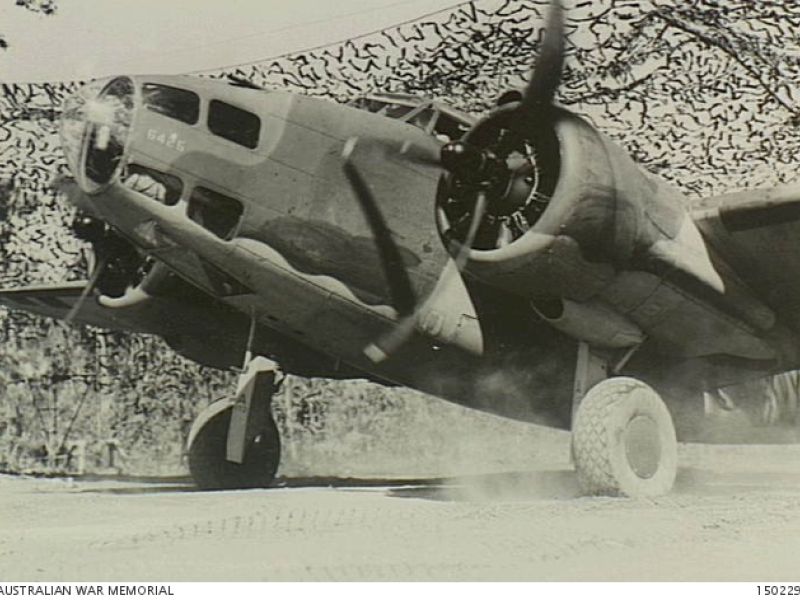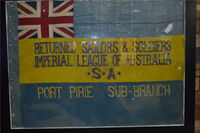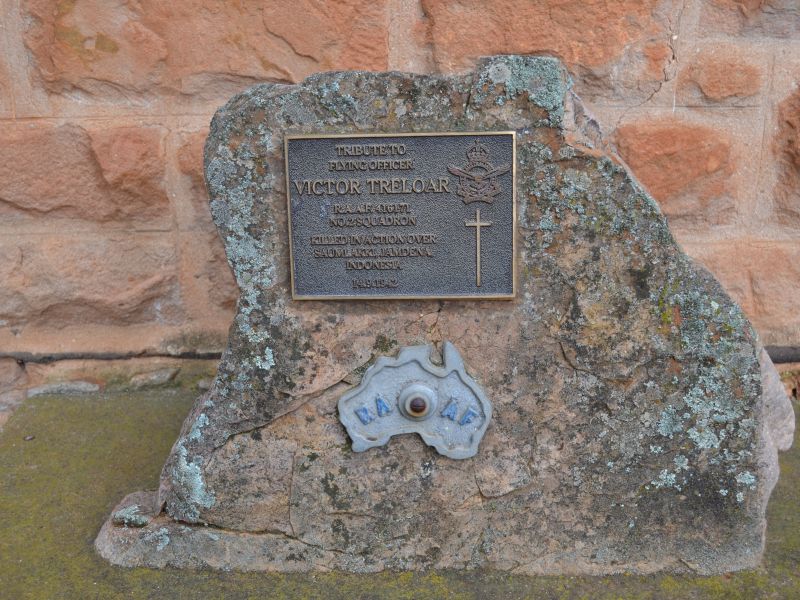Victor Treloar
Victor (Vic) Treloar was born in Redhill, South Australia to Thomas Henry Treloar and Olive Hesba Treloar (nee Hill) on the 2nd January 1913.
Victor had spent two years military training with the 9th Light Horse Regiment in Crystal Brook until the disbanding of the troop. Before enlisting into the Royal Australian Air Force (RAAF)on the 31st March 1941, Vic was engaged in farming at Red Hill.
Vic married Florence Joan Horne (Joan) from nearby Koolunga.
Vic postings included No. 4 Initial Training School, Victor Harbour, S.A; No. 1 Wireless/ Air Gunners School, Ballarat, Vic; No. 2 Bombing and Gunnery School, Port Pirie, SA; No.5 Service Flying Training School, Uranquinty, N.S.W; No. 55 Operational Base Unit, Birdum, N.T; and onto Batchelor Airfield, N.T,
After the outbreak of the Pacific War, 2 Squadron (RAAF) mounted reconnaissance and bombing missions against Japanese shipping and installations on islands including Timor and Ambon.
On the 14th September 1942 during a daylight raid on a Japanese vessel in Saumlaki Bay in the Tanimbar Islands group, Netherlands East Indies, Lockheed Hudson Light Bomber A15-172 of which Victor was a crew member, was hit by anti-aircraft fire from a shore battery.
Two other Hudson’s (A16-160 and A16-217) that participated in the attack witnessed a “flaming mass hurtling towards the water” after the bomber had apparently been hit in an auxiliary fuel tank. The aircraft hit the water about 300 yards from the vessel and in the opinion of the Commanding Officer of 2 Squadron it was not possible that any of the crew members escaped from the aircraft.
On the 23rd September 1942 in a reply letter to one of Victors’ mates, wife Joan Treloar writes…
“I heard only yesterday from a friend, who saw the message come through about the missing plane, that one member of the crew, and possibly another was seen to bail out when their aircraft exploded. One was seen to land safely and I suppose by now is a prisoner of war. So, if that is right Vic may still be alive, and then again it may have been one of the other boys. If he has lost his life, well as much as I’ll miss him, I shall be very proud to think that my husband did his bit to defend this country of ours.”
Unfortunately, all of the aircrew were killed in the crash including Flying Officer Kenneth Lewis McDonnell, (Captain) Service Number 401656; Flying Officer Victor Treloar, (Wireless Air Gunner) Service Number 416171; Pilot Officer Kevin Joseph Ahern, (Observer) Service Number 401754; Sergeant Gilbert Stanley Dobbs, (Wireless Air Gunner) Service Number 414292 and Sergeant Gerald Ward Smith, (Wireless Air Gunner) Service Number 413294.
Flying Officer Victor Treloar, Service Number 416171, aged 29 years; left a widow and three children.
The air crew are remembered at the Ambon Memorial on Ambon Island near the south west coast of Ceram in the Molucca Group of Islands, Indonesia. The Ambon Memorial was constructed on the site of a former prisoner of war camp, and commemorates 442 officers and men of the Australian forces who have no known grave. Of these, nearly 300 belonged to the Australian Army and over 150 to the Royal Australian Air Force; they lost their lives in Ambonia, in other islands of the Molucca group and in Celebes. Many of those commemorated here died in the defence of Ambonia in the early months of the war against Japan and others were killed in the Allied assault on Japanese air bases established on Ambonia and Celebes. A large number perished in Japanese prisoner of war camps.
Source:National Archives of Australia.
- Casualty Repatriation - Aircraft - Hudson A16-172 https://recordsearch.naa.gov.au/SearchNRetrieve/Interface/ViewImage.aspx?B=5256…
- Service Record https://recordsearch.naa.gov.au/SearchNRetrieve/Interface/ViewImage.aspx?B=1055…

 RSL (Port Pirie Sub Branch) Inc.
RSL (Port Pirie Sub Branch) Inc.